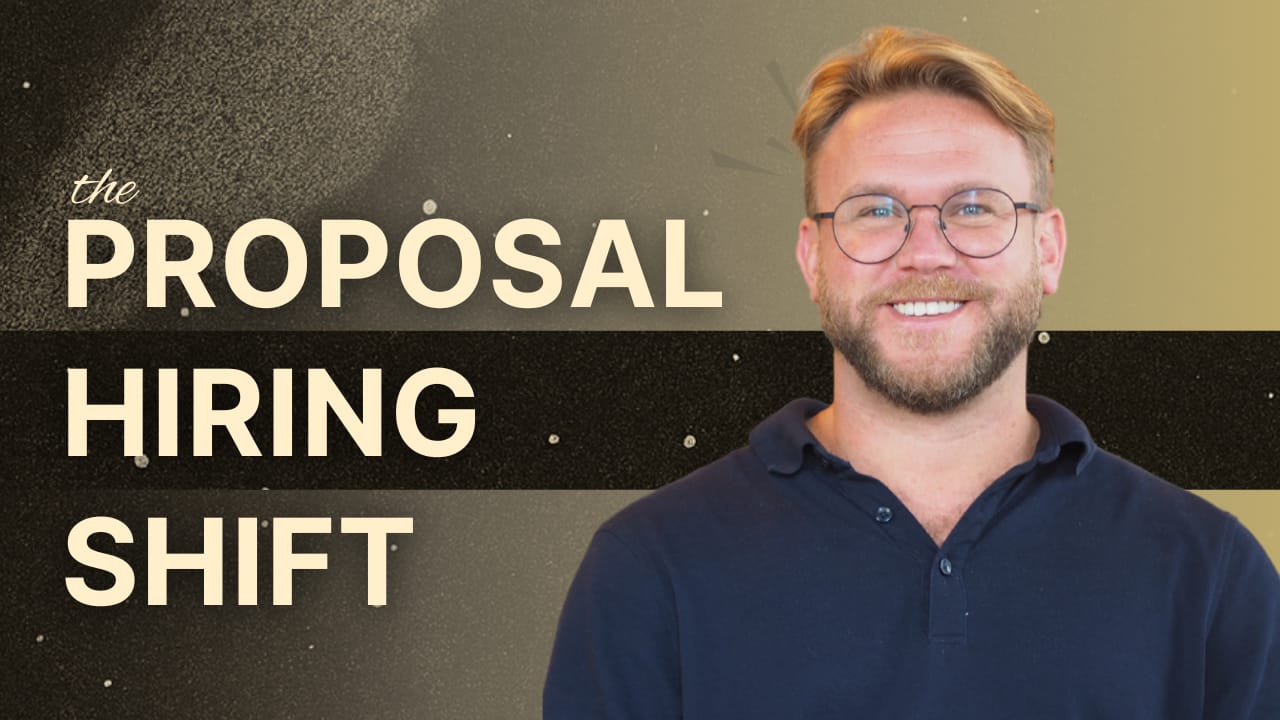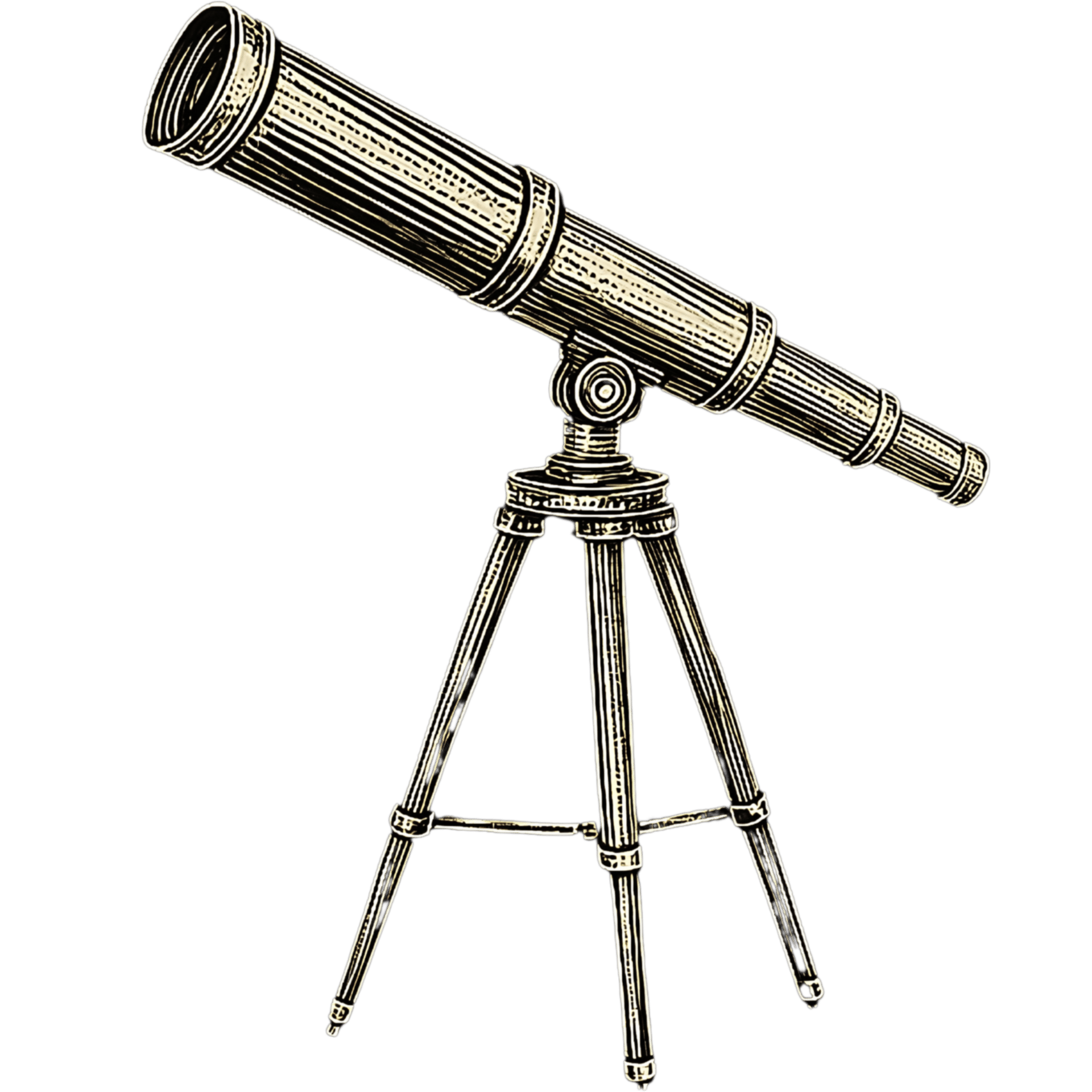- The Stargazy Brief
- Posts
- 🌙 STARGAZY FIELD NOTES
🌙 STARGAZY FIELD NOTES
From compliance factory to strategy engine: reengineering proposals
✹ TL;DR
By 2030, Gartner predicts 70% of routine sales tasks will be automated and 80% of sales leaders will manage mixed human-AI teams.
Yeah, it’s kind of weird.
Proposal teams who cling to manual methods will become the new “admin overhead,” and I don’t want that for anyone.
The good news is those who treat AI as a teammate (not a tool) will own the future of persuasion, trust, and commercial strategy. I want that for all of us.
✹ Insider Brief: The Future of Sales Is Your Future, Too
Proposal work has always been future-leaning, with an emphasis on automation, analytics, personalization. But we’ve never faced a decade like this.
What we’re seeing right now is that sales organizations are not adding AI; they’re architecting around it.
Human effort is being repositioned toward empathy, influence, and creativity, which are things most of us enjoy the most.
The proposal function sits at the exact intersection of that shift. It’s up to you/us if we lead that change within our teams…or get optimized out of it by people who fundamentally do not understand RFPs.
✹ The Proposal Function Is Quietly Becoming Sales Strategy
While proposal professionals are being forced to focus on document formatting, most CROs are currently redefining what “seller productivity” means.
That might sound like nonsense, so hear me out on this.
In Gartner’s research, top CSOs (CROs in most companies), are restructuring roles around “tech-as-a-teammate.” This means AI is being treated as a formal member of the revenue team
That language matters.
Once you design roles with AI in mind, your team’s identity changes. You can easily shape your role as a commercial command center.
For proposal professionals, that means:
Offloading content retrieval, redlining, and formatting to AI.
Owning persuasion strategy, narrative design, and deal coaching.
Using AI to simulate evaluator thinking.
✹ What this means for our roles?
Gartner found that organizations are redesigning jobs around three behaviors: action-centered insight, tech partnership, and adaptivity by design
In proposal terms, this means we probably need to change our job descriptions - and I firmly believe this will either help you grow in our roles as an industry, or, um, not exist.
✹ Action-centered Insight
We have got to stop measuring our value by how many proposals we finish. Start measuring it by which deals we change.
What it looks like:
You use AI to surface evaluator patterns, competitor language, or scoring biases and reshape narrative accordingly.
You frame every executive summary as a decision map: “Here’s what they’re really solving for, and here’s how we align.”
You brief sales on persuasion angles!
✹ Tech Partnership
You don’t wait for IT to tell you what’s possible; you design the workflow.
What it looks like:
You build prompt templates that reflect your firm’s win themes and tone of voice.
You train AI to pre-screen inputs for compliance, completeness, and narrative gaps, freeing your team to focus on influence.
You log where automation succeeds or fails, so every iteration compounds knowledge.
✹ Adaptivity by Design
Static processes don’t win in dynamic markets (and holy cow it’s dynamic right now!). The best teams treat proposal operations as a living experiment.
What it looks like:
You run quarterly retros to retire broken workflows and document new shortcuts.
You test micro-innovations: 15-minute AI redline sprints, modular content swaps, one-page visual exec summaries.
You design for resilience! If your AI goes down (did you love that AWS outage this week, too?), your human plan keeps the bid alive.
We can define our roles as “strategy at scale to win more” vs “I write so many proposals so quickly omg. wow.” Which one would you rather be?
✹ Turning Gartner’s Sales Vision Into Proposal Strategy
1. Audit for Automation Value, Not Volume.
Gartner urges CSOs to model sales capacity by role and map AI productivity gains
Do the same for your proposal unit.
List your top 20 repetitive actions (compliance cross-checks, SME reviews, template formatting) and score them on frequency x frustration. Use this to guide what to automate first.
🐝 Micro-CTA: Run this with your team next week or the next time you have a slight RFP lull; it’ll expose exactly where AI gives you back human hours.
2. Create Tiered Engagement Models.
Gartner suggests offering buyers “tiered options” between AI and human-led engagement.
Borrow that logic. Design three bid archetypes:
Tier 1: Fully AI-assisted bids (low-value, fast turnaround)
Tier 2: Hybrid responses (AI for research, human for narrative)
Tier 3: Human-led storytelling (strategic, must-win deals).
This reframes AI as a deliberate choice, not a background tool.
3. Build Your Proposal Recovery Plan.
80% of CSOs will need AI-based disaster recovery and continuity plans.
If your bid data, templates, or models go down mid-submission, what’s your failover
Who verifies AI outputs when policies change or models drift?
🐝 Start a 30-day sprint to build your AI governance playbook. You’ll sleep better.
✹ Field Guide: The “4 Pillars” for Proposal AI
Gartner visualizes the 4 Pillars of AI Strategy — Vision, Value, Adoption, Risk
Here’s how they translate for us:
Vision: Define what AI success looks like in your pipeline. Is it reduced cycle time? Better evaluator experience? Higher compliance confidence?
Value: Tie every AI use case to a commercial metric, like hours saved, win rate lift, or review cycle speed.
Adoption: Your SMEs and reviewers are your users. Train them to trust AI’s input quality before you scale.
Risk: Build verification workflows for every AI output. Gartner calls it “robust verification systems to maintain trust.”
✹ Join the conversation in stargazy
Saying No (and Sleeping Better)
Philip De-Bodene (Principal Proposal Consultant) shared what most of consultants are thinking about: he turned down a project because doing it right would’ve meant overextending. The thread sparked a powerful conversation about how to protect quality and sanity by saying “no” as a complete sentence,” and why good clients respect boundaries (and often come back stronger), the “Reality Check Bid Qualifiers” Kathleen V. uses before accepting a bid, and how tone-perfect no-bid letters can actually build trust and future work. Join the thread in Stargazy→
AMA: The Future of AI-Native Proposals with Dean Shu (CEO, Arphie)
Our latest Stargazy AMA brought Dean Shu, CEO of Arphie, into the hot seat for a week-long Q&A on what happens when AI stops assisting proposals and starts co-authoring them. Drop your question for Dean or add your voice to the AMA.
What are yours?! →
Choose Your GovCon Signals Badge
This month’s badge drop partnered with GovSignals, the pre-RFP intelligence platform that helps you see opportunities before they hit eBuy. Members are voting on four exclusive Stargazy × GovSignals badges, each one a metaphor for how you hunt, read signals, and move before the market:
Choose your fighter style →
✹ Interview with David Bremner, Pursuit & Bids Recruitment Manager

✹ Inside Bids & Proposals Hiring in 2025
David Bremner (Manager at 3Search) brought a recruiter’s lens to the bids and proposals world, unpacking what 2025’s job market really means for professionals navigating salary plateaus, AI hype, and shifting expectations.
The conversation covered:
Why tier-one firms are trimming while mid-tiers are scaling up — and how to spot opportunity in the downcycle.
How to read salary patterns in 2025 — and when staying put pays more than jumping.
Which skills will separate the next generation of leaders — EQ, accountability, AI literacy, and in-person influence.
The red flags hiding in hybrid job descriptions — and how to negotiate for clarity and support.
Why career growth is tilting toward client-facing pursuits roles — blending storytelling, strategy, and deal leadership.
David also issued a challenge: stop hiding behind deliverables. Those who lead tech adoption, shape process, and show impact will earn faster promotions and set the standard for what modern proposal leadership looks like.
🎧 Listen: Inside Bids & Proposals Hiring in 2025
📺 Watch: Full video episode
💬 Join the conversation: “Which skill move are you making for 2025?” → Stargazy AMA Thread

Proposal leaders from AWS, Google, Deloitte, Mace, and Capita are already inside. Join us, too?
See you under the stars,
✨ Chris
P.S. Follow us on LinkedIn for launches, playbooks, and upcoming AMAs.
P.P.S. You can review your proposal software tool on stargazy. That gives us proposal people a better idea of what tools our peers love…and which ones aren’t for us.
Know a proposal pro who needs help rethinking their proposal process with automation? Forward this email or share the Playbook link.